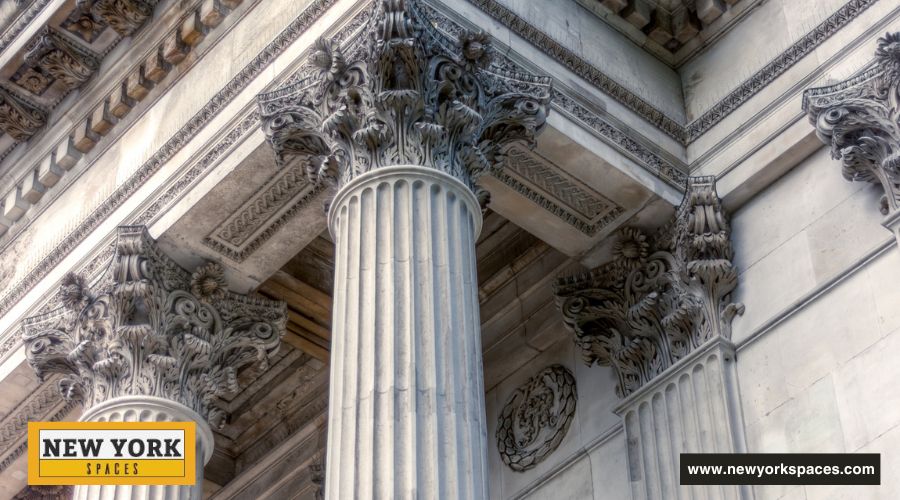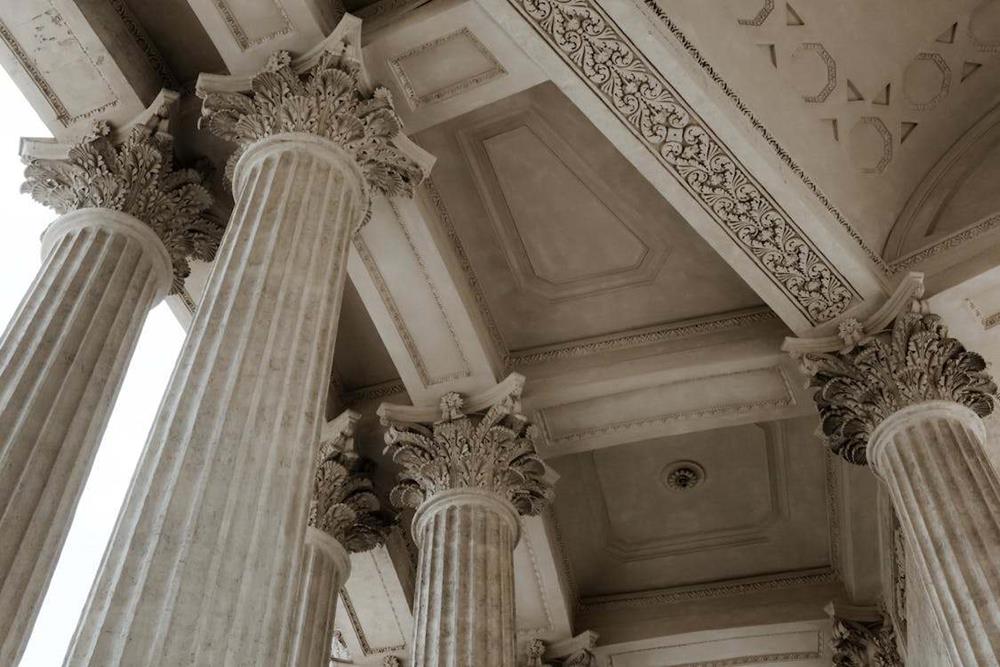Composite columns stand as a testament to the ingenuity of ancient architecture, skillfully serving as both pivotal structural elements and intricate decorative pieces. Their inception can be traced back to the earliest civilizations, where they not only supported monumental structures but also symbolized the artistic and cultural achievements of the era. Through centuries, composite columns have evolved, adapting to subsequent periods’ changing tastes and technological advancements, maintaining their relevance and allure in the architectural landscape.
Historical Context and Evolution
The journey of composite columns begins in the cradle of civilization, where the Egyptians, Greeks, and Romans laid the foundational stones of architectural elegance. In ancient Egypt, columns were pivotal in temple architecture, embodying structural necessity and religious symbolism. The Greeks further refined column design, introducing orders such as Doric, Ionic, and Corinthian, each with distinctive characteristics.
The Romans pioneered the composite column, skillfully merging the fluted shafts of the Ionic with the ornate capitals of the Corinthian order, creating a new paradigm of architectural beauty and complexity.
Greek and Roman Contributions
The Greeks set the stage for architectural innovation, but the Romans embraced and expanded upon these concepts, giving birth to the composite column. This new order represented a harmonious blend of the scroll-like volutes of the Ionic order with the acanthus leaves of the Corinthian, symbolizing the pinnacle of Roman architectural sophistication.
The composite column became a hallmark of Roman temples, public buildings, and triumphal arches, showcasing the empire’s wealth, culture, and engineering prowess.
Medieval to Renaissance Revival
As the Roman Empire waned, the knowledge and appreciation of composite columns traversed through the Byzantine and Medieval periods, often overshadowed by the prevailing architectural styles of those times. However, the Renaissance marked a rebirth of classical ideals, with architects like Brunelleschi and Michelangelo reinterpreting ancient forms for a new era.
Composite columns once again graced cathedrals, palaces, and public squares, symbolizing a bridge between the past and present and underscoring the era’s quest for beauty, proportion, and harmony.
Modern and Contemporary Uses
The advent of modern architecture saw a shift towards minimalism and functionalism, yet composite columns found their way into the new era, albeit with innovative twists. Contemporary architects have reimagined these ancient elements, incorporating them into buildings that reflect a blend of historical reverence and forward-thinking design.
Using modern materials such as reinforced concrete, steel, and composites, today’s composite columns pay homage to their classical roots while meeting the demands of contemporary construction and aesthetics. This fusion of old and new underscores the timeless appeal of composite columns, ensuring their place in the lexicon of architectural design.
Design and Characteristics
Composite columns design and characteristics reflect a sophisticated blend of strength, beauty, and versatility, making them a pivotal feature in diverse architectural styles.
Structural Features
Composite columns are architectural marvels, blending function with form in a manner that has captivated designers and onlookers for centuries. At their core, these columns consist of three main components: the base, the shaft, and the capital, each contributing to the column’s overall structural integrity and aesthetic charm.
The base provides a solid foundation, anchoring the column to the ground. The shaft, often fluted, rises from the base, lending height and elegance. The capital, the most ornate part, crowns the column, often with intricate designs that can include acanthus leaves, volutes, and other decorative motifs. This ornamentation adds beauty and signifies the column’s composite nature, marrying different architectural styles into one cohesive element.
Material Innovation
The evolution of composite columns is also a story of material innovation. Initially carved from stone and marble, these materials were chosen for their durability and beauty, embodying the architectural ambitions of ancient civilizations. As time progressed, the introduction of concrete, steel, and composite materials revolutionized the construction of composite columns.
These modern materials expanded the possibilities for architects, allowing for greater heights, slimmer profiles, and more varied designs. Such materials reflect an ongoing dialogue between the past and present, where traditional aesthetics are preserved even as technology pushes boundaries.
Aesthetic Appeal
The aesthetic appeal of composite columns lies in their ability to articulate strength and beauty simultaneously. The intricate capitals, often laden with symbolic meaning, are a testament to their creators’ craftsmanship and artistic vision. From the acanthus leaves symbolizing immortality in ancient cultures to the bespoke designs of contemporary columns, these features capture the eye and imagination. The blend of structural robustness with ornamental finesse makes composite columns a favored element in architectural design, bridging practicality with artistic expression.
Architectural Applications
Composite columns are foundational architectural elements, offering structural support and aesthetic enrichment across various applications.
Supporting Structures
Composite columns have long played a pivotal role as supporting structures in architecture, embodying a perfect blend of utility and aesthetics. Their robust construction enables them to bear significant loads, making them indispensable in the design of large buildings, from ancient temples to modern skyscrapers. Beyond their practical function, composite columns influence buildings’ interior and exterior design, contributing to the architectural narrative through their form, material, and decoration.
They help define spaces, create rhythm, and enhance the overall visual harmony of structures, proving their enduring value in architecture.
Decorative Purposes
Beyond their structural capabilities, composite columns excel in decorative roles. They adorn facades, gateways, and interiors, adding layers of meaning and beauty to the architectural canvas. Whether flanking grand entrances or standing as focal points in public spaces, these columns transform ordinary structures into works of art.
Their versatility allows them to be customized to fit various architectural themes and styles, making them as much a statement of identity as they are of support.
Versatility in Design
The true genius of composite columns lies in their versatility, seamlessly integrating into various architectural styles across different eras and regions. From the grandeur of ancient temples, where they first emerged as symbols of divine connection, to the elegance of Renaissance churches, reflecting a rebirth of classical beauty, and onto the sleek lines of modern civic buildings, composite columns have adapted and thrived.
This chameleon-like ability to fit into diverse architectural landscapes highlights their timeless appeal and enduring relevance in architecture.
Significance and Legacy
The significance and legacy of composite columns extend far beyond their structural function, embodying a rich tapestry of cultural and architectural history.
Cultural Symbolism
Composite columns carry deep cultural and symbolic meanings that transcend their physical presence. Across different cultures and eras, they have been imbued with significance, reflecting the values, beliefs, and aspirations of the societies erected them. For instance:
- Ancient Civilizations: Composite columns in ancient Rome symbolized the pinnacle of architectural achievement and the blending of cultural influences, embodying power and divine beauty.
- Renaissance: During the Renaissance, the revival of composite columns represented a renewed appreciation for classical antiquity, signifying the blend of humanistic values with architectural innovation.
- Modern Times: In contemporary architecture, composite columns can symbolize a bridge between the past and the future, honoring tradition while embracing modernity.
Architectural Influence
The influence of composite columns on the field of architecture is profound and multifaceted, impacting design, theory, and education:
- Design: Composite columns have inspired architects to blend different architectural styles, creating innovative structures that reflect a rich tapestry of historical influences.
- Theory: They have contributed to the development of architectural theory, encouraging a dialogue between form, function, and symbolism in building design.
- Education: In architectural education, studying composite columns is fundamental to design evolution and integrating structural integrity with aesthetic considerations.
Preservation and Restoration
The preservation and restoration of structures featuring composite columns present unique challenges and opportunities:
Challenges:
- Material Degradation: Natural wear and environmental factors can deteriorate the materials of ancient composite columns, requiring careful restoration techniques.
- Technological Adaptation: Integrating modern preservation technologies with traditional materials and methods demands a nuanced approach to restoration.
Importance:
- Cultural Heritage: Preserving these structures safeguards our cultural heritage, providing a tangible link to our past and insights into ancient architectural practices.
- Educational Value: Restored composite columns and the buildings they support are invaluable educational resources, illustrating the evolution of architectural styles and construction techniques.
The ongoing efforts to preserve and restore buildings with composite columns underscore their enduring significance in our architectural and cultural legacy, ensuring that future generations can appreciate and learn from these magnificent structures.
Conclusion
Exploring composite columns in architecture reveals a fascinating journey through history, embodying the synthesis of structural ingenuity and aesthetic beauty across various cultures and epochs. From their origins in ancient civilizations to their reimagining in modern designs, composite columns are a testament to humanity’s quest for architectural excellence.
They carry deep cultural symbolism, significantly influence architectural design and theory, and present challenges and opportunities in preservation and restoration. As we continue to study and preserve these architectural marvels, composite columns remain a vital link to our past, enriching our present and inspiring future generations to appreciate the intricate blend of form, function, and symbolism that defines our built environment.


